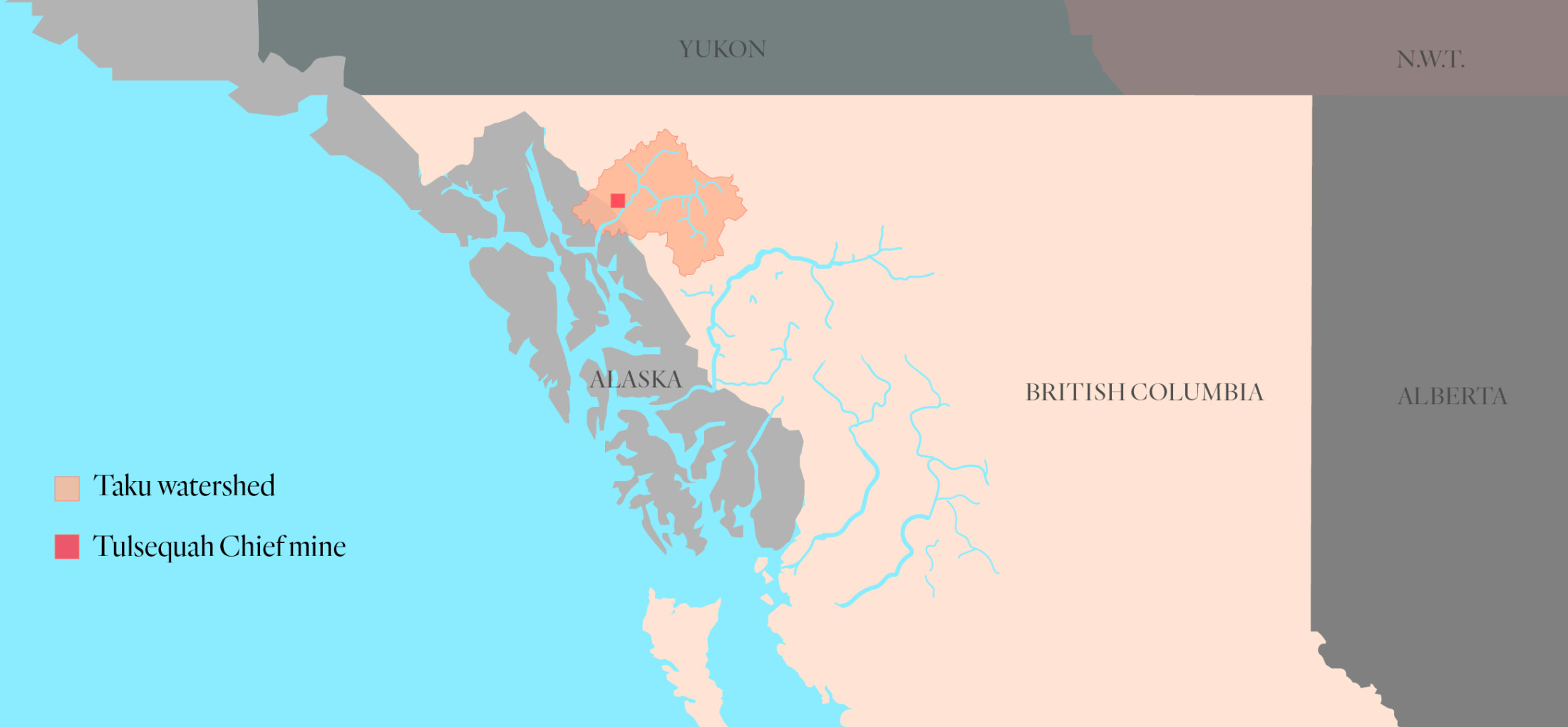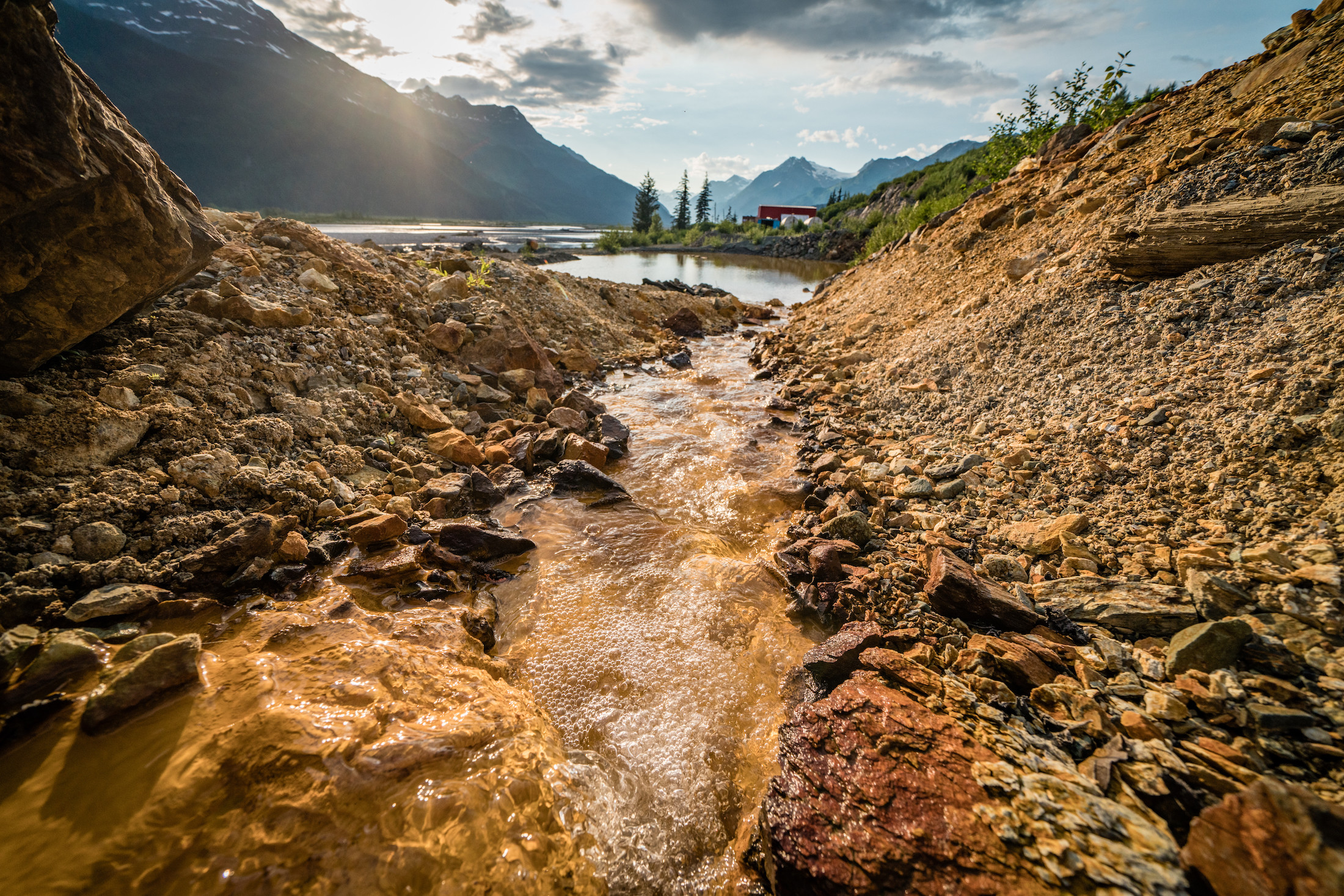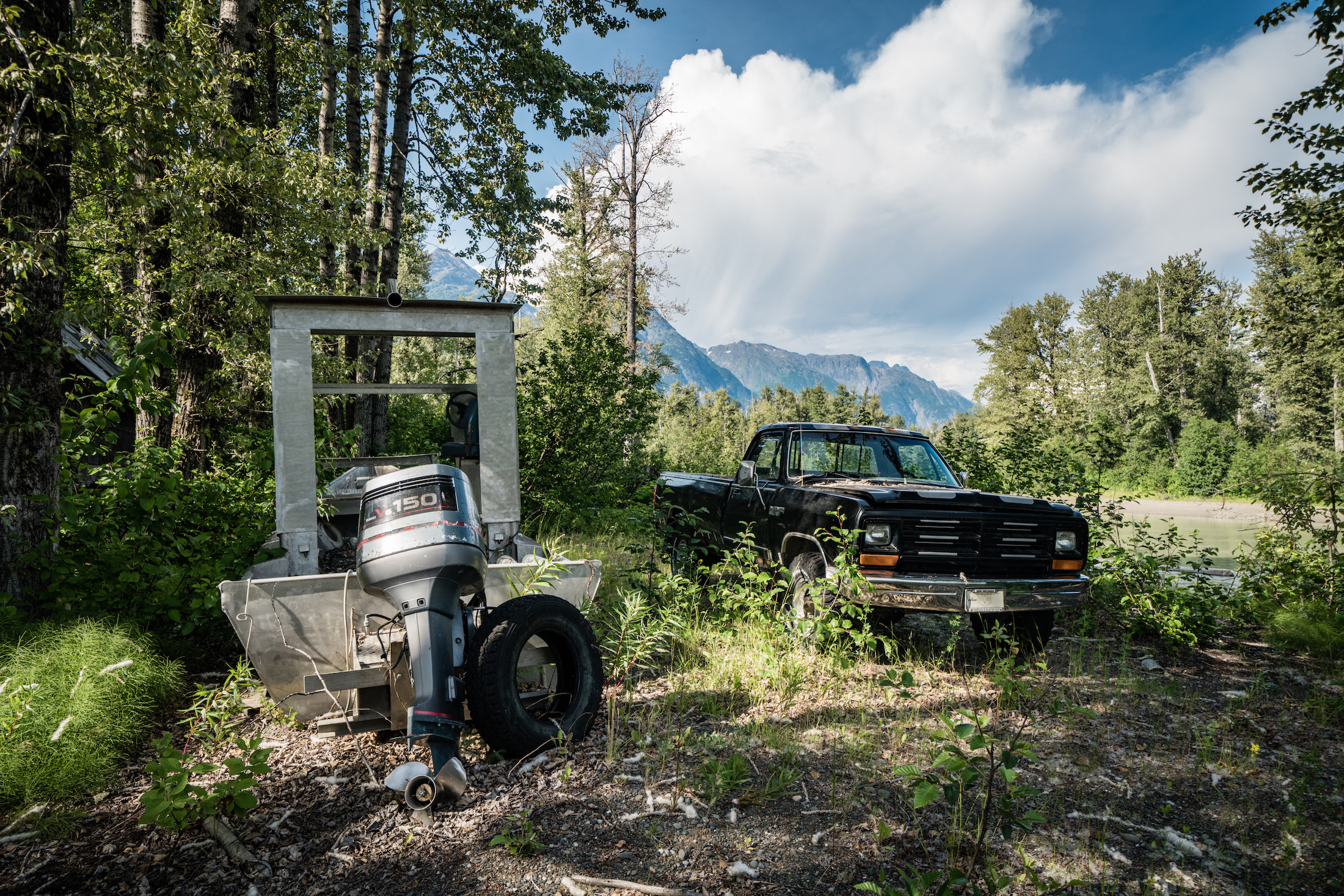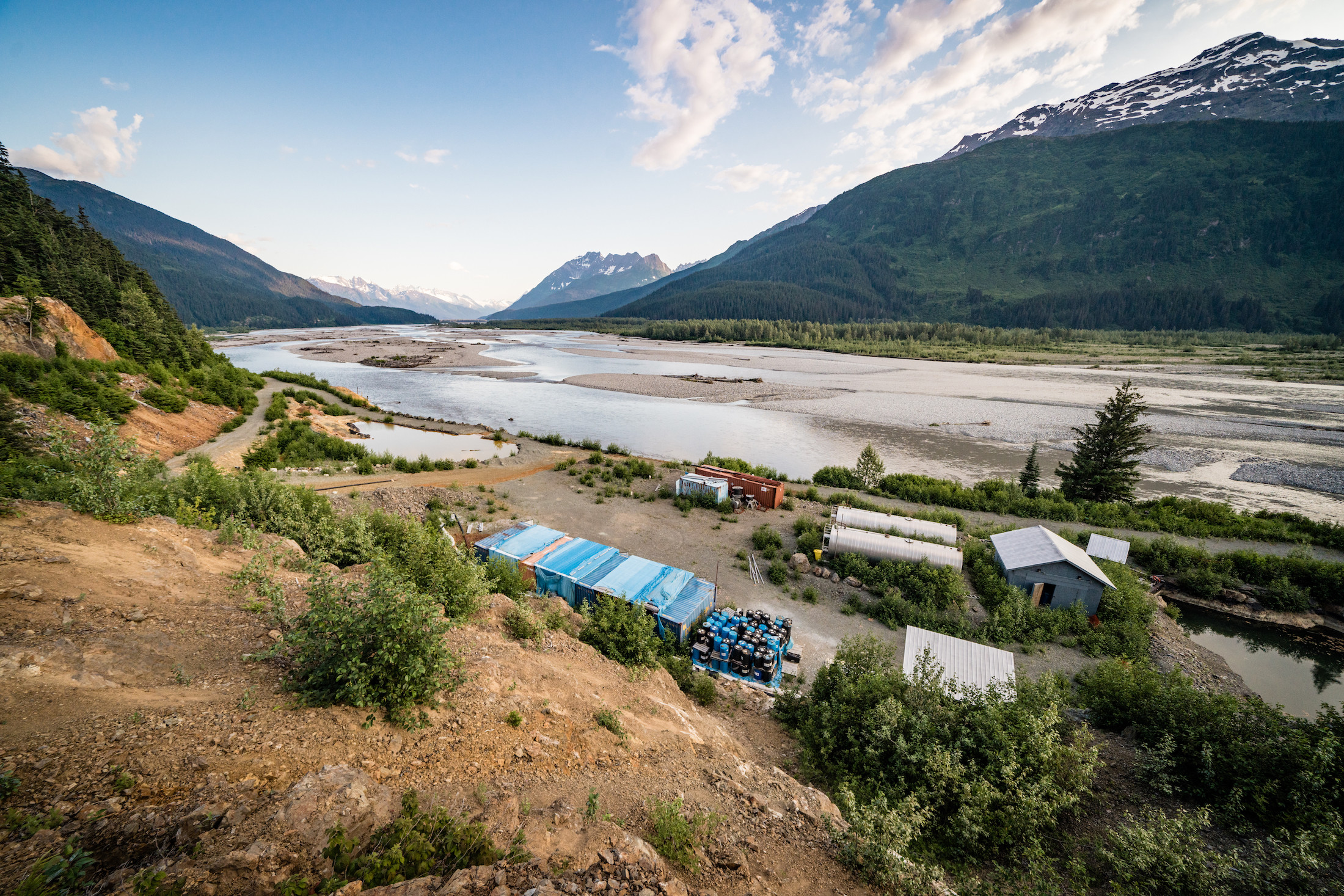
Bill 5: a guide to Ontario’s spring 2025 development and mining legislation
The public has a few days left to comment on Doug Ford’s omnibus development bill....
The Tulsequah Chief mine — which has been leaking contaminated water into a salmon watershed on the B.C.-Alaska border for over 60 years — will cost $48.7 million to clean up, according to a
final remediation plan released by the B.C. government on Wednesday.
The cleanup effort will also cost up to $1 million a year for monitoring and maintenance in perpetuity, according to the plan. It’s unclear who will pay the cleanup tab, because the owner of the mine is in receivership.
The province, in collaboration with the Taku River Tlingit First Nation, said it will begin work this summer to ready the Tulsequah Chief mine site for final closure.
“Taking action now is critical in order to begin to address the impacts of the former Tulsequah Chief mine,” George Heyman, Minister of Environment and Climate Change Strategy, said in a press release.

The location of the abandoned Tulsequah Chief mine in relation to the Taku River watershed. Map: Carol Linnitt / The Narwhal
According to a 2016 report commissioned by Rivers Without Borders, a non-profit organization in that focuses on transboundary issues in B.C. and Alaska, an estimated one million litres of contaminated water flows into the Tulsequah River, a main tributary of the Taku River, every day.
“After more than 60 years of polluting a world class salmon watershed, two bankruptcies, four years of receivership proceedings and a lot of promises, we are finally seeing real progress toward mine cleanup and closure,” Chris Zimmer of Rivers Without Borders said in a press release.
“We have some concerns with the closure and cleanup plan and as to how and when the plan will be implemented. But between B.C.’s strong demand to end the receivership process and the release of the cleanup and closure plan, there is real momentum toward ending pollution from the Tulsequah Chief.”
Water at the Tulsequah Chief mine is contaminated due to acid rock drainage, which occurs when rock becomes oxidized and forms sulphuric acid, which leaches heavy metals out of the rock. The contaminated water includes copper and zinc, among other contaminants, at levels far exceeding safe standards.
The 113-page final remediation plan was prepared by SNC Lavalin and SRK Consulting and includes cost estimates and a conceptual five-year plan to permanently close the mine and contain the acid rock drainage.

Water contaminated with acid mine drainage flows into a containment pond near the Tulsequah River. Photo: Colin Arisman / The Narwhal
Teck-Cominco operated the Tulsequah Chief mine for seven years, before abandoning it in 1957. The company, a mining giant in Canada, never put systems in place to contain the toxic waste materials.
Chieftain Metals bought the property in 2010 to reopen the mine, on the condition that it addressed the acid rock drainage issues. It built an interim water treatment plant, but only operated it for less than a year before the company shut it down, citing high operational costs. Chieftain never achieved its goals of reopening the mine before going into receivership in 2016. This week, the company and its largest creditor, West Face Capital, attended a hearing at the Ontario Superior Court of Justice to determine whether the receivership proceedings will be finalized or extended.
The decision on receivership is critical to determining the future of the mine site. West Face Capital could acquire the property through debt owed to the company by Chieftain Metals. If this happened, it would be in a position to sell the property to another mining company. In the hearing, West Face asked for an indefinite extension to the receivership so it can continue to pursue a buyer.
The Taku River Tlingit First Nation submitted its statements to the court, urging for a quick and final decision.
“Taku River Tlingit people are not currently able to exercise their Aboriginal rights at or around the mine site due to unsafe conditions and fears that plants and animals harvested from the area would be unhealthy to consume because of environmental contamination from the mine,” the statement read.
While it’s uncertain who will foot the bill for the eventual cleanup and closure of the mine, Teck has been involved in planning workshops for the reclamation report.
“We understand that a number of ongoing legal proceedings with respect to the site will need to come to a conclusion as a long-term approach is finalized,” Teck told The Narwhal in a statement. “However, as this process moves forward, we are supportive of the province and the Taku River Tlingit First Nation’s interim reclamation actions at the site.”
‘When are they going to ensure the polluter pays?’: proposed B.C. mining reforms don’t go far enough
Last year, the Environmental Law Centre and more than 30 mining advocacy and legal organizations called on the B.C. government to reform its mining laws. Suggested changes included ensuring companies are held legally liable for cleanup and setting up requirements for long-term independent analysis of water treatment systems. Even if those reforms are implemented, legacies like Tulsequah could remain a direct cost to taxpayers.
While mining companies are required to provide money up front to the government to cover the costs of reclamation, the province currently only has $1.6 billion in bonds to cover an estimated $2.8 billion in reclamation costs.
“This small mining site is a stark reminder that we need to make sure the polluter pays and that we update our reclamation bond policy,” Nikki Skuce, director at Northern Confluence, said in an email. “It also reinforces that if you can’t clean up your mess because of costs, remoteness or complexities with the site, then you shouldn’t be able to mine at all. I think British Columbians would support no-go zones for mining and ensuring the polluter pays if it meant protecting salmon rivers and avoiding $50 million taxpayer clean-up bills.”

Skiffs and barges were used to run workers and materials upriver to this staging area, from where trucks could drive the access road to Tulsequah Chief mine. Photo: Colin Arisman / The Narwhal
Because the site is so remote, access has always been an issue driving up costs associated with reclamation. There is no road to the former mine — small aircraft and barge are the only ways to reach the site. Barging on the river can only be done in high flow, which means there is a very narrow window of time each year to get equipment to the site, and with tides affecting entry to the Taku River, the logistics are challenging. Extreme weather conditions further complicate access.
“Where the mouth of the Taku meets the salt water, a number of different mountain ranges and channels come together, and it can be just like a horrible washing machine, and very difficult to get through,” Zimmer with Rivers Without Borders told The Narwhal in an interview. “What we’ve seen in the past when the mining companies were trying to barge stuff up there, the barges were getting stuck everywhere.” But Zimmer said it’s still the obvious option. “Flying in a bulldozer is pretty expensive.”
Accessing the site via river also means crossing an international border, a lengthy bureaucratic process. Then, once the barge reaches a suitable landing site, the equipment still has to travel to the mine on road, which is in dire need of repair.
“Some of the first steps include replacing and repairing bridges, upgrading the access road, establishing an erosion protection berm and repairing the existing airstrip,” the ministry said in the press release.

The abandoned Tulsequah Chief mine site is situated just meters from the Tulsequah, a tributary of the salmon-rich Taku River. For six decades B.C. has failed to address acid mine drainage at the mine site. Photo: Colin Arisman / The Narwhal
Zimmer told The Narwhal the plan reads more like a plan for a plan, outlining several options and highlighting significant gaps in data.
“To call it a final plan could be confusing. It’s not the final plan. It’s kind of a framework that says here are the questions we need to answer, we need to do these studies, here are the options, and here are the pros and cons. So it’s still really hard to tell exactly how good this is going to be — it depends on how it’s implemented.”
The challenges of accessing the mine and the complexity of the site delayed field studies last year. This year, the outbreak of COVID-19 further delayed fieldwork. As The Narwhal recently reported, plans are underway to continue studies this summer, but it’s uncertain whether the recent announcement will include work on-site.
“The closure and reclamation plan outlines a phased approach that involves a series of steps designed to reduce the ongoing contamination,” the government statement said. “It is designed to be flexible, so changes can be made once more information is gathered from the site.”
Zimmer said he isn’t a fan of so-called “adaptive management” but given the site’s complexity, it’s the only way forward.
As for the actual closure of the mine, the report proposes three different options for controlling and addressing the water contamination issues. One dilutes the waste water with creek water to reduce the toxins to safe levels before it reaches the river. Another suggests controlling the rate at which the water is coming out, similarly to dilute and regulate the acidic content. And the last option proposes to inject the waste water underground into the aquifer beneath the Tulsequah River.
“There still seem to be a lot of unknowns in terms of water treatment options to deal with the copper, lead, zinc and other toxins that far exceed B.C. water quality guidelines,” said Skuce, the Northern Confluence director. “None of the options to dilute or bury the wastewater seem ideal, but it’s reassuring that the province is working with the Taku River Tlingit First Nation and State of Alaska who highly value salmon and water quality.”
The report itself admitted each of the options has significant drawbacks, but said the site could require a combination of all of the methods of water treatment.
“The combination here of an acid-producing mine right next to salmon habitat, you know, it’s a bad combination,” Zimmer said. “And it points out the challenges of reclaiming these mines. Dealing with acid mine drainage, this stuff is insidious.”
Despite the obvious challenges ahead, Zimmer is optimistic. “Let’s get some things done now that we know we can do and hopefully we can stick to a good timeline. Overall, I think it’s a very good step forward.”
Get the inside scoop on The Narwhal’s environment and climate reporting by signing up for our free newsletter. On a warm September evening nearly 15...
Continue reading
The public has a few days left to comment on Doug Ford’s omnibus development bill....

115 billion litres, 70 years to fix, $5.5 billion in lawsuits

Climate change, geopolitics and business opportunities power a blue economy
